The Resurrectionist / Wrath James White
 Leisure Books / September 2009
Leisure Books / September 2009
Reviewed by: I.E. Lester
The Resurrectionist by Wrath James White the kind of novel that can unsettle even the most hardened gore fanatic. White writes the kind of horror that gets under your skin, and reading his brand of hardcore fiction may have the unintended side effect of making you feel...wrong. Seriously wrong.
Yet despite White’s uncanny ability to make the reader squirm with his ideas, he surprisingly doesn’t overdose on the red and sticky. Sure, there are blood splatters and entrails aplenty, but there's far more to his fiction than the unimaginably intricate ways he describes disembowelling, eye gouging, slicing and dicing, and arterial flow.
No, White packs a hefty punch when it comes to the originality of ideas, the plotting of his stories, and the believability of his characters. Take the villain in The Resurrectionist, Dale McCarthy. Dale is the consummate nerd, lacking even the most basic of social skills. He's physically unimpressive — weedy frame and heavily acne-scarred face. In short, he's no woman's dream date.
But Dale has a special ability, and it's not your average big, bad horror power. Taken at face value, Dale's gift is a very positive one: He can bring people back from the dead. How much more decent can a supernatural ability get, this reviewer asks? In White’s capable hands, however, there is nothing decent about Dale’s gift, as the author subverts it into something dark and twisted. Something very dark — and very twisted.
Knowing he will never attract a woman through conventional means, yet having the same sexual desires as most young men his age, he uses his miraculous ability for a very perverse purpose. Dale breaks into a woman's house, fatally stabs her while she sleeps, and proceeds to rape her still-warm corpse. And when he's done, he simply breathes into her mouth and brings her back to life, totally unaware of what he's done.
Yep, Dale is a major league sicko.
Sarah Lincoln, though, is different than most of Dale’s victims. For one thing, Dale believes she is the most beautiful woman he's ever seen and so she has the misfortune of his prolonged attention.
In addition, unlike his previous victims, Sarah begins to remember the attacks. Soon after Dale moves onto her street, she begins to have nightmares about the assaults. Although initially believing them to be nothing but overly vivid dreams inspired by her new neighbor creeping her out, she soon starts to see evidence that her nightmares are anything but the product of her own subconscious.
And for once in a horror novel, the victim does a sensible thing: She calls the cops. Problem is that her story about being raped and murdered isn't totally convincing — she’s walking and talking without any visible signs of an assault.
In the years since Richard Laymon's death, this reviewer has come across many books with review quotes proclaiming the author to be the late dark scribe’s natural successor or something to that effect. Most of these books, while decent reads in their own right, have not truly lived up to such comparisons. None have succeeded in producing that shiver down your spine or that patented gross-out wince Laymon could inspire.
Wrath James White has managed this in both of his Leisure novels (Succulent Prey being the other one) and is well on his way to building a reputation as a master of Laymon-esque hardcore horror.
Purchase The Resurrectionist by Wrath James White.
“The Things” / Peter Watts
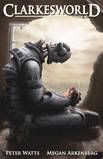 From Clarkesworld Magazine #40 / January 2010
From Clarkesworld Magazine #40 / January 2010
Reviewed by: Daniel R. Robichaud
"I am being Blair. I escape out the back, as the world comes in through the front." So begins Peter (Blindsight) Watts' contribution to the January 2010 issue of Clarkesworld.
In "The Things," an extraterrestrial being completely assimilates other life forms by means of an alien communion. In the fractious, paranoid natures of humanity, it soon discovers a grave threat: individual parts of the creature's whole are rebelling. Discord is the source of terror here, and the protagonist creature finds itself almost as much a victim as the human beings it absorbs.
If the premise and the character names peppering this tale sound familiar – Blair, Childs, Copper, Norris, MacReady – this is no coincidence. They are intended to resonate with fans of science fiction and horror cinema. "The Things" is a retelling of the 1982 film John Carpenter's The Thing as taken from the eponymous, shape changing being's perspective. However, this is no simple fan fiction. Watts uses what might have proved a hokey premise as a springboard for a thoughtful, chilling, and moving examination of humanity as both victim and monster. Knowledge of the source material adds layers to the tale but is not necessary for enjoyment.
In an interesting twist, "The Things" also incorporates the moods and themes from another cinematic influence: the early films of Canadian director David Cronenberg, where horrors are born from the body misbehaving in imaginative ways.
Watts' biology background lends the story a unique verisimilitude, while his skillful use of language produces a compelling narrative. The story sharply communicates the creature's dread at discovering humanity's values and terrors. The tale's greatest triumph: One of the most disturbing and alien creations in cinema is made empathetic.
"The Things" offers a gripping science fiction terror tale, as well as an intriguing interpretation of its source material.
Read “The Things” by Peter Watts.
The Darkly Splendid Realm / Richard Gavin
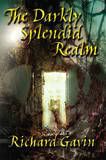 Dark Regions Press / December 2009
Dark Regions Press / December 2009
Reviewed by: Joan Turner
“There are strange forces in the world, invisible to us, but as real, for all that, as you and me.”
— Percy Bysshe Shelley
Richard Gavin’s third collection, The Darkly Splendid Realm, includes thirteen varied stories connected loosely by the theme of nature’s dark splendors. The literary quality of these contemporary tales transcends genre, but happily, their subtle terrors place them well within the horror realm. The stories, and in fact, the book in all aspects including cover art and design, inspires a sense of awe and wonder reminiscent of the work of early 20th century masters, as the cover text suggests, a rare quality in today’s horror fiction. The introduction is by Laird Barron, and the intriguing Celtic-like primal green cover by Harry O. Morris beckons the unwary reader inside where dark delights – ranging from sojourns into alternate realms to all too human atrocities – await.
Proving once again that subtle horror, the psychological terror of fear and dread of the unknown, is often more powerful than its more visceral counterparts, Gavin puts to good use the elements of atmosphere, voice and mood to imprint his Gothic terrors upon the reader’s subconscious. But the stories are primarily effective because the characters are well drawn, not stereotypes. These are stories about real people, whether good or bad, confronting real problems, as outré as they may be.
All the stories are strong and well worth reading. The following list offers examples of what the collection has in store.
“Prowling through Throated Chambers” brings to life the terrors of an amusement park chamber of horrors revealing that the most horrendous evil can reside, not in horror’s familiar tropes, but in the seemingly benign and trusted.
“Primeval Wood” a novella, is the story of a lost weekend, hawthorn bushes that bloom with strange children and a curse that transforms a visitor forever.
In “Children of the Mound,” crusaders are sent by the Caesar to build a church in pagan land and to establish Christianity as the accepted religion at whatever cost to the dissenters. Their mission is also to learn the fate of the party who was sent before them. While the ending is somewhat predictable, this Celtic tale chronicling the encounter between faerie and Christian forces is one of the most engaging in the collection.
“Getting the Strap,” the story of an abused youngster and the effects of the abuse on the man he becomes involves no supernatural horror. It is more a cautionary tale that is unsettling in its own right.
“Following the Silent Hedges” takes readers into the unseen world that, where the boundary is thin, is only a step away. This Lovecraftian-like story is chilling in its implications as it offers a glimpse from the other side.
Richard Gavin, with two previous collections, Charnel Wine and Omens, is a relatively new voice in literary horror. He is a gifted writer, his fiction fresh, original and thoroughly enjoyable. The Darkly Splendid Realm is an outstanding collection of stories meant to be savored, reread and enjoyed again and again.
Purchase The Darkly Splendid Realm by Richard Gavin.
The Moonlit Earth / Christopher Rice
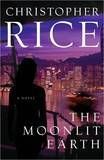 Scribner / April 2010
Scribner / April 2010
Reviewed by: Vince A. Liaguno
Writers like Christopher Rice are lucky. Not lucky because their literary heritage opened a few initial doors early in their careers, because we all know that only talent can sustain a career – and Rice has plenty of that. Not lucky because his out-of-the-box success gave him the clout and sales figures to allow him to branch out from the gothic mystery leanings of his earlier works.
No, writers like Christopher Rice are lucky because their readers have patience. Patience when their output is merely passable – as is the case with Rice’s latest thriller, The Moonlit Earth.
Clichéd characters populate an action-film plot involving terrorist intrigue in the Far East in this strange brew of a novel that suffers from an uninteresting protagonist, an off-canvas villain, and pacing problems galore.
Megan Reynolds is the poor little rich girl who hails from an affluent California seaside town. As the novel opens, she arrives home in Cathedral Beach, discredited following a scandal that involves the well-intentioned misappropriation of funds that sinks the San Francisco non-profit for homeless teens she helmed. Her sense of disgrace is matched only by her disdain for the surroundings and people who enabled her privileged upbringing. Although Rice sets the character up to be the sympathetic outsider, Megan comes off as anything but – petulant, ungrateful, and willful. Add to this mix the stock characters of the boozy, prescription pill-popping, society matron mother and the smarmy, rich, string-pulling cousin and you’ve already got an unlikable cast of characters by page 25.
The emotional center of Megan’s world is her brother Cameron – a pretty boy flight attendant who’s as indistinguishable a character as any West Hollywood party boy and nearly as unsympathetic as Megan. Cameron – who’s apparently so strikingly handsome as to be the public face of his airline – ends up getting implausibly involved with a family of wealthy Saudis after the youngest son (a bona fide closet-case Middle Eastern prince nonetheless!) solicits him for sex on a privately chartered jet. Factor in one behind-the-scenes corporate bad guy, a deadly terrorist act in Hong Kong, and a case of mistaken identity, and you’ve got yourself the makings of a B-grade Bruce Willis flick, co-starring Lost’s Naveen Andrews as the Middle Eastern bodyguard (whose depiction here is the epitome of stereotype) and the late Michael Jackson as the creepy, man-child prince. If that weren’t enough, Rice layers in a soap opera subplot involving family secrets that holds all the emotion of a Lifetime movie and rings patently false to the ears in the end.
Every writer has an “off” day – and The Moonlit Earth is Rice’s. Pacing here is disconcerting, from the oddly placed forty-page flashback that all but halts the novel’s forward flow in the third act to the rushed climax and pointless post-finale narrative extension that revisits some of that familial melodrama.
Rice proved himself a master of narrative layering and pacing with his first two novels – A Density of Souls and The Snow Garden, both gothic mysteries in which characters rang true with emotional resonance and events seemed plausible. He expanded upon those first signs of notable talent with Light Before Day, his third novel, while adding in elements of the traditional thriller. The result was a brilliantly seedy, titillating slice of noir. Then a funny thing happened on the way to the bookstore.
Christopher Rice decided he wanted to be a straight-up thriller writer. Worse, he decided to flex his budding literary muscles and started to write protagonists he was intensely ill-equipped to write – first, the heterosexual marine trying to clear his service buddy’s tarnished name in 2008’s Blind Fall and, now, a heterosexual woman in The Moonlit Earth. In the process, he falls flat on his keyboard with characters who are difficult to sympathize with and who simply don’t come across as real people.
Sure the old writing instruction of “Write what you know” is limiting to a seasoned writer, but there is an authenticity to that pragmatic piece of advice that can cause longtime readers to celebrate when writers heed it. It’s difficult to understand why Rice gave up writing protagonists he knew intimately – namely, the gay male outsider – for the lackluster one-dimensional central characters of his last two novels. Let’s hope he’s working something out of his system and will soon return to what he knows – and writes brilliantly. In the meantime, forgive him The Moonlit Earth and go back and revisit one of his first three novels.
Purchase The Moonlit Earth by Christopher Rice.
The Watching / Paul Melniczek
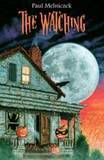 Bad Moon Books / October 2009
Bad Moon Books / October 2009
Reviewed by: Joan Turner
Paul Melniczek’s novella The Watching is the first in the new Halloween line from Bad Moon Books. Jill Bauman’s cover and artwork are outstanding. The Watching is a limited edition of one-hundred-fifty numbered paperback copies and twenty-six lettered hardcover copies. The story has interesting concepts, but unfortunately, fails to achieve its full potential. It is a fusion of fantasy and mild horror with a bright, near-fairytale beginning. The mood and atmosphere then change as the story descends toward a dark conclusion. In addition to being caught between genres, several of the main characters are one-dimensional – either totally good or totally evil – and most of the dramatic action takes place off stage.
Pat is a happy little girl who lives on the farm with her adoring Aunt Margie and Uncle Ray. Ray’s sister, Trish, who also lives with them, is Pat’s caretaker. Trish is Pat’s favorite aunt and best friend. The only problem is that Trish is fond of good naturedly teasing Pat and telling her scary stories that sometimes frighten her. One day Trish tells Pat a terrifying story that upsets her and makes her angry. That night she has trouble sleeping.
Getting out of bed, Pat goes to her window and looks out, her mind filled with spooky and bad thoughts. She has an overactive imagination that she sometimes thinks is a tangible entity, a separate being that sleeps inside her mind with a mind and life of its own. This night she instinctively knows that her imagination is wide awake.
She hears a voice from below and peering down sees her Aunt Trish trying to coax one of the family cats into the house. Suddenly Pat hears a sound like something being stretched. Then something reaches out from the darkness of the house, grabs Trish and pulls her back into the shadows. No clue is ever found to explain Trish’s disappearance.
The story takes a downward turn that is ever more somber and depressing as unseen entities Pat calls her “keepers” deal mercilessly with anyone perceived as a threat, even those who love her most and only want to protect her.
While the story’s characterization and narration are less than satisfying, The Watching does have potential. The entity born of the lead character’s imagination is an intriguing villain, presenting an interesting hypothesis of the supernatural and the power of the subconscious mind.
Purchase The Watching by Paul Melniczek.
Necropolis / John Urbancik
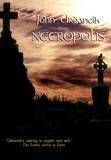 Bad Moon Books / June 2009
Bad Moon Books / June 2009
Reviewed by: Derek Clendening
Welcome to the “City of the Dead!” That is essentially John Urbancik’s welcome to his readers in his novella Necropolis published by Bad Moon Books. Following several groups of people on a day trip to the cemetery, Urbancik seems to pose rhetorical questions and complex equations to prove that graveyards are far livelier than they seem. From the outset, one will quickly realize that Necropolis is not a hardcore gore-heavy horror story, but rather a tale that will appeal to the more intellectual dark fiction reader.
As a shorter story, Urbancik weaves a complex tale with no wasted motion, which is crucial no matter the medium, but especially working within a limited word count. Still, the narrative structure he employs within the confines of this particular medium makes Necropolis a double-edged sword. For example, the introduction of numerous characters in intricate situations might call for the story to be novel-length. Granted, the option to flesh out the tale into a novel could still be in the cards for Urbancik. It seems to this reviewer that such a story would do very well to expand upon the characters, their history and relationships, to pull the readers in even deeper. Urbancik could no doubt pull off this feat in a more skillful way than many more seasoned novelists.
In a nutshell, Necropolis epitomizes the horror genre’s modern progress. If labels are necessary, the appropriate tag for this work should be “dark fiction” or “dark literary”. Think Gary Braunbeck, John R. Little, Rio Youers and other likeminded authors, all part of a particular faction affixing its stamp on horror by spinning yarns that are more offbeat than bloody, more strange than gory. Necropolis is atypical despite the title and premise, and the horror is subtle but no less spine-tingling. Prose doesn’t come much cleaner or more concise that what you will find within the pages of Necropolis. The story is perfectly enjoyable for the rainy day reader, just as long they understand that they will be doing more than reading. They will be partaking in an experience.
For readers with a penchant for horror stories that delve deep into the human psyche and strike a nerve, then Necropolis is the novella for you. Keep an eye out for future titles by this author; Urbancik is a name on the rise. This reviewer suspects that his name and works will come to greater prominence in the near future.
Purchase Necropolis by John Urbancik.
The Girl in the Woods / David Jack Bell
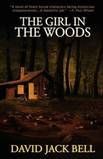 Delirium / August 2009
Delirium / August 2009
Reviewed by: Rick R. Reed
Synopsis: When Diana Greene leaves her hometown for a new life, she thinks she has left the past behind: her sister's disappearance, her mother's illness, and the visions Diana used to see...a clearing in the woods...a moonlit night...and human bones buried in the ground. And her past remains dormant until the day a mysterious woman appears on Diana's doorstep, promising Diana something she can't resist. "If you help me find my missing daughter, I'll tell you what happened to your sister." Soon Diana is digging into the past, uncovering secrets the town has long since buried, secrets that the powerful wish would stay hidden. But when another girl disappears and the visions return to Diana with a vengeance, she knows she is on the brink of solving more than just a few missing person cases. She is on the brink of discovering the dark and violent covenant that the town itself was founded upon.
Review: As both a writer and reader, I always am confounded by genre definitions. Do I write horror, suspense, mystery, paranormal, dark fantasy, thriller, or speculative fiction? All of the above? A, B, or C?
I suspect, on the basis of The Girl in the Woods, David Jack Bell might be confounded by the same difficulty. Is The Girl in the Woods a smart thriller, a paranormal tale about a strange clearing and its compelling effects, a police procedural, a dark fantasy about psychic visions? My answer to all of the questions above is: does it matter? As long as it’s a good story, I leave the pigeonholing to the literary critics, and the readers and reviewers who concern themselves with such things.
The Girl in the Woods is a good novel, period. It's a sharp, well-written page turner that as a reader I could not keep my hands off of, so compelling was my desire to see what happened next. Bell keeps us involved by creating an enormously sympathetic central character, Diana Greene, who is either a touch psychic or is a receiver for the pull of the mysterious clearing that is the heart of the book, a place where great evil has been done in the name of power. Bell also gives us a gray-shaded antagonist, a pitiable creature who only wants love, but is willing to kidnap, rape, and kill to have it. Somehow, Bell manages to make us feel something for this tainted creature aside from hatred.
I enjoyed The Girl in the Woods for many reasons, mainly the author’s crisp economical prose and his ability to breathlessly drive a narrative. Those two things demonstrate Bell’s talents as an author because he manages to sweep us up into his world and makes us forget the words he uses to describe it. That’s good writing: when an author can provide the verbal clues to spark and engage our imagination.
As good as The Girl in the Woods was, I did have a couple of quibbles. Spoilers ahead! (Be warned in case you want to come to the book with no preconceived notions.) One aspect of the novel I thought that really undercut the suspense was having the present-day missing girl be killed about three quarters of the way through the novel. I would have been more engaged as a reader if she had been alive and in jeopardy. Her being killed so early on was somewhat of a literary premature ejaculation, with much the same result as its physical counterpart: my interest declined precipitously. But Bell does manage to get a twist in near the end that I was not expecting, so he somewhat righted himself. The other thing that bothered me about the book was Diana’s mother, who seemed to also have a psychic connection to her missing daughter, yet the connection seemed off. She tells her daughter, “You have to go there. You have to find her.” We know she’s referring to the clearing and we assume (and rightly so) that she’s referring to her missing daughter, and Diana’s missing sister, Rachel. That turns out not to be the case…so I was left wondering why the mother knew anything at all, unless it was simply to place a red herring in the narrative.
Overall, though, I would highly recommend The Girl in the Woods to both fans of horror and suspense — and even true crime.
Purchase The Girl in the Woods by David Jack Bell.
Columnist Rick R. Reed is the author of twelve novels and has short fiction in more than twenty anthologies. He lives in Seattle, WA. Find out more about the author at his official author website.




